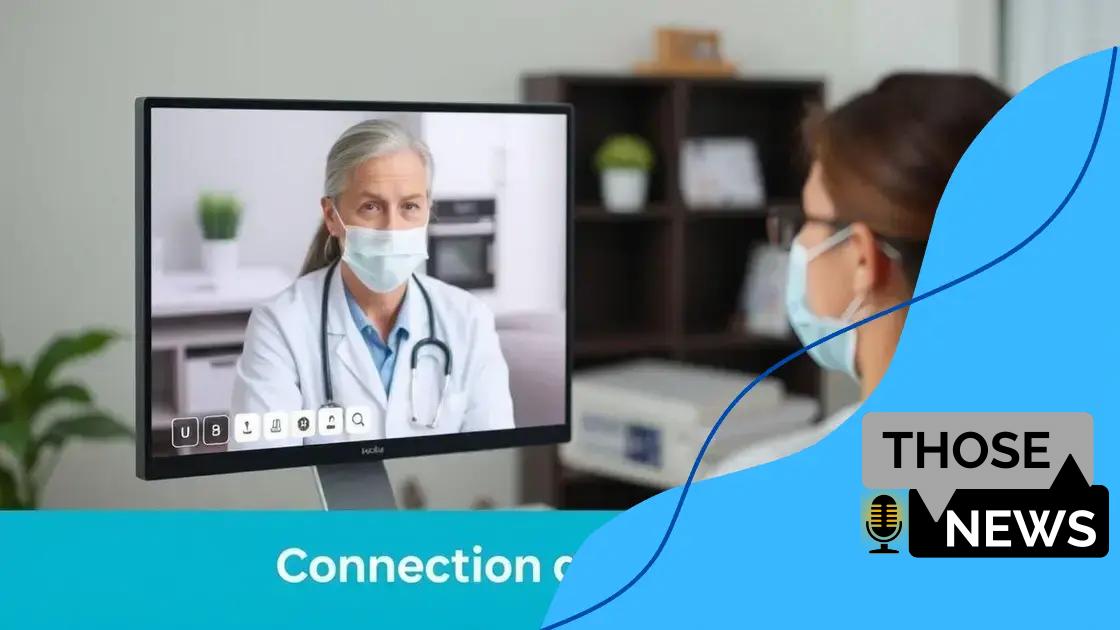How telemedicine is reshaping healthcare benefits

Telemedicine is reshaping healthcare by improving access to medical care, allowing patients to consult with providers remotely, while facing challenges like technology access and privacy concerns.
How telemedicine is reshaping healthcare benefits opens new doors for patients seeking convenient and efficient care. Imagine a world where your doctor is just a video call away—what would that change for you?
Understanding telemedicine and its key components
Understanding telemedicine and its key components is essential as it changes the way we think about healthcare. Telemedicine refers to the use of technology to deliver medical care remotely. This means you can connect with your healthcare provider from the comfort of your home.
Key Components of Telemedicine
Several factors make telemedicine effective:
- Technology: Platforms like video calls and mobile apps.
- Communication: Ensures clear interaction between patients and providers.
- Data Security: Protects personal health information through secure channels.
With these tools, patients can receive consultations without needing to travel. Imagine being able to speak to your doctor about your symptoms via video chat and getting medical advice in minutes! The convenience of telemedicine allows for better access to healthcare, especially for those who may have mobility issues.
Additionally, telemedicine can improve healthcare at any time of the day. You don’t have to wait for office hours to get help. This is vital during emergencies when immediate assistance is required. Overall, it enhances patient satisfaction by making healthcare more accessible.
Moreover, some telemedicine services include remote monitoring devices that keep track of your health metrics. For example, a patient with diabetes can use a device to monitor their blood sugar levels, sending updates directly to their healthcare provider.
Benefits for Healthcare Providers
Not only do patients benefit, but healthcare providers also see advantages:
- Increased Reach: Doctors can treat patients in remote areas.
- Time Efficiency: More patients can be seen in less time.
- Cost Savings: Reduces overhead costs, leading to savings for both doctors and patients.
This adaptability makes telemedicine an invaluable tool. It truly reshapes how we view and access healthcare, emphasizing the importance of technology in modern medicine.
Benefits of telemedicine for patients and providers
The benefits of telemedicine for patients and providers are profound and far-reaching. As technology continues to evolve, it becomes clear that both healthcare consumers and practitioners can gain significantly from this innovative approach.
Advantages for Patients
Patients experience many advantages when utilizing telemedicine services. Accessing care has never been easier. For one, patients can connect with their doctors without the need for travel, reducing both time and cost. Imagine not having to sit in waiting rooms or worry about commute times! This convenience is especially beneficial for those living in rural areas.
- Improved Access: Patients in remote areas can see specialists more easily.
- Time Efficiency: Reduced waiting times and quicker appointments.
- Comfort: Receiving care from home can ease anxiety during consultations.
Moreover, telemedicine often allows for more flexible scheduling. Patients can arrange appointments that fit their busy lives, leading to more consistent follow-up care. The ease of communication through video calls or messages fosters a stronger patient-provider relationship, enhancing trust and satisfaction.
Advantages for Providers
On the other side, healthcare providers also reap numerous benefits from adopting telemedicine. By offering remote consultations, they can expand their patient base significantly. Providers no longer have geographical limitations in reaching individuals needing care.
- Increased Efficiency: Streamlines daily operations and manages patient flow effectively.
- Cost Savings: Lowers administrative costs associated with in-person visits.
- Enhanced Patient Monitoring: Providers can monitor patient health remotely with advanced tools.
This adaptability not only helps in managing more patients but also provides opportunities for continuous care. With telemedicine, providers can follow up with patients more easily, ensuring their health remains a priority. Overall, the integration of telemedicine fundamentally improves healthcare experiences for both patients and providers alike.
How telemedicine enhances access to specialized care

How telemedicine enhances access to specialized care is a crucial topic in modern healthcare. It breaks down barriers that often prevent patients from receiving the care they need. With telemedicine, individuals can consult with specialists who might be located far away without ever leaving their home.
Improved Accessibility
One of the major advantages of telemedicine is improved accessibility to specialists. Patients in rural or underserved areas can now see doctors who specialize in their conditions. For instance, someone needing consultation for a rare disease can easily connect with an expert, no matter where they live.
- Remote Consultations: Patients can have virtual appointments at their convenience.
- Broader Choices: Patients can choose from a wider range of specialists.
- Continuity of Care: Ongoing monitoring and follow-up become easier.
Moreover, telemedicine eliminates the need for long travels, which can be burdensome for patients with mobility issues. This ease of access can significantly improve patient outcomes as they receive timely care and advice.
Technology’s Role
The technology used in telemedicine is also pivotal in enhancing access to care. Platforms that allow video conferencing, secure messaging, and shared health records have transformed how patients interact with healthcare providers. These advancements enable better communication, ensuring that specialists have all the necessary information to provide effective treatment.
Additionally, telemedicine solutions often include tools for managing chronic illnesses remotely. A patient with diabetes can regularly share their glucose readings with their specialist, ensuring proactive management of their health. This kind of access to specialized care not only helps in treating health issues but also empowers patients in managing their own health.
Overall, telemedicine enhances access to specialized care by removing geographic constraints and providing timely support. This transformation is crucial as it helps patients receive the right care when they need it most, leading to better health outcomes and improved patient satisfaction.
The role of technology in telemedicine success
The role of technology in telemedicine success cannot be overstated. It serves as the backbone of all telehealth services, enabling seamless communication and care delivery. The advancements in technology have made it possible for healthcare providers and patients to connect from anywhere, fostering better health outcomes.
Key Technologies in Telemedicine
Several technologies are fundamental to telemedicine:
- Video Conferencing: This allows real-time consultations, making it feel like an in-person visit.
- Mobile Applications: Apps help patients schedule appointments, access health records, and communicate with providers.
- Wearable Devices: Tools like smartwatches can monitor health metrics, sending vital information to healthcare professionals.
With these technologies, healthcare becomes more accessible than ever. Patients can receive timely care without leaving their homes, which is especially valuable for those in remote areas or with mobility challenges.
Data Security and Privacy
Moreover, technology in telemedicine also addresses critical issues like data security and patient privacy. Strong encryption and secure data handling methods are needed to protect patient information during virtual visits. This ensures patients feel safe sharing sensitive health information remotely.
Integration of electronic health records (EHRs) with telemedicine platforms has increased efficiency in managing patient care. Providers can easily access patient history and notes during consultations, allowing for informed decision-making.
In addition, the use of Artificial Intelligence (AI) improves the diagnostic process by analyzing data patterns, providing insights that aid physicians in making informed treatment decisions. Overall, the continuous growth of technology significantly enhances the effectiveness of telemedicine, transforming the healthcare landscape.
Challenges and future of telemedicine in healthcare
Challenges and the future of telemedicine in healthcare present a complex picture. Although telemedicine is transforming patient care, several hurdles remain that need addressing. Despite its advantages, some patients and providers face barriers to fully adopting telehealth.
Current Challenges
One significant challenge is the issue of technology access. Not everyone has the equipment or reliable internet connection required for virtual visits. This digital divide can prevent patients, especially in rural areas or low-income neighborhoods, from accessing necessary healthcare.
- Technical Literacy: Some patients struggle to use telemedicine platforms due to a lack of training.
- Privacy Concerns: Patients may worry about sharing sensitive health information online.
- Regulatory Issues: Different states have varied laws affecting telehealth practices, which can complicate care delivery.
Additionally, reimbursement policies for telemedicine services can be inconsistent and vary from one provider to another. Some insurance plans may not fully cover telehealth visits, making patients hesitant to utilize these services.
The Future of Telemedicine
Despite these challenges, the future of telemedicine looks promising. As technology advances, we can expect more intuitive interfaces that make virtual care easier for everyone. Increased funding and support for telehealth initiatives may also help improve access.
Innovations like Artificial Intelligence (AI) are likely to play a key role by enhancing diagnostic accuracy and personalizing patient care. Over time, as more people become accustomed to using digital health solutions, the overall confidence in telemedicine will grow.
Furthermore, the COVID-19 pandemic has accelerated the adoption of telemedicine, encouraging healthcare systems to innovate and improve their digital offerings. With continued advancements and a commitment to overcoming existing barriers, telemedicine can solidify its place in modern healthcare.
In conclusion, telemedicine is reshaping the landscape of healthcare by improving access and convenience for patients and providers alike. While challenges like technology access and regulatory issues remain, advancements in telehealth technology promise a brighter future. As more people embrace these services, we can expect telemedicine to become a mainstream method of delivering healthcare. Through continued innovation and support, telemedicine can enhance patient care, ensuring that everyone has the opportunity to receive quality health services right from home.
FAQ – Frequently Asked Questions about Telemedicine
How does telemedicine improve access to healthcare?
Telemedicine allows patients to consult with healthcare providers from the comfort of their homes, overcoming geographical barriers and enhancing convenience.
What are the main challenges in adopting telemedicine?
Challenges include technology access, patient privacy concerns, and inconsistent reimbursement policies across different states.
What technologies are essential for successful telemedicine?
Key technologies include video conferencing tools, mobile apps for scheduling appointments, and wearable devices for monitoring health data.
What is the future outlook for telemedicine?
The future looks promising, with advancements in technology likely to improve access, streamline care, and address existing challenges.





